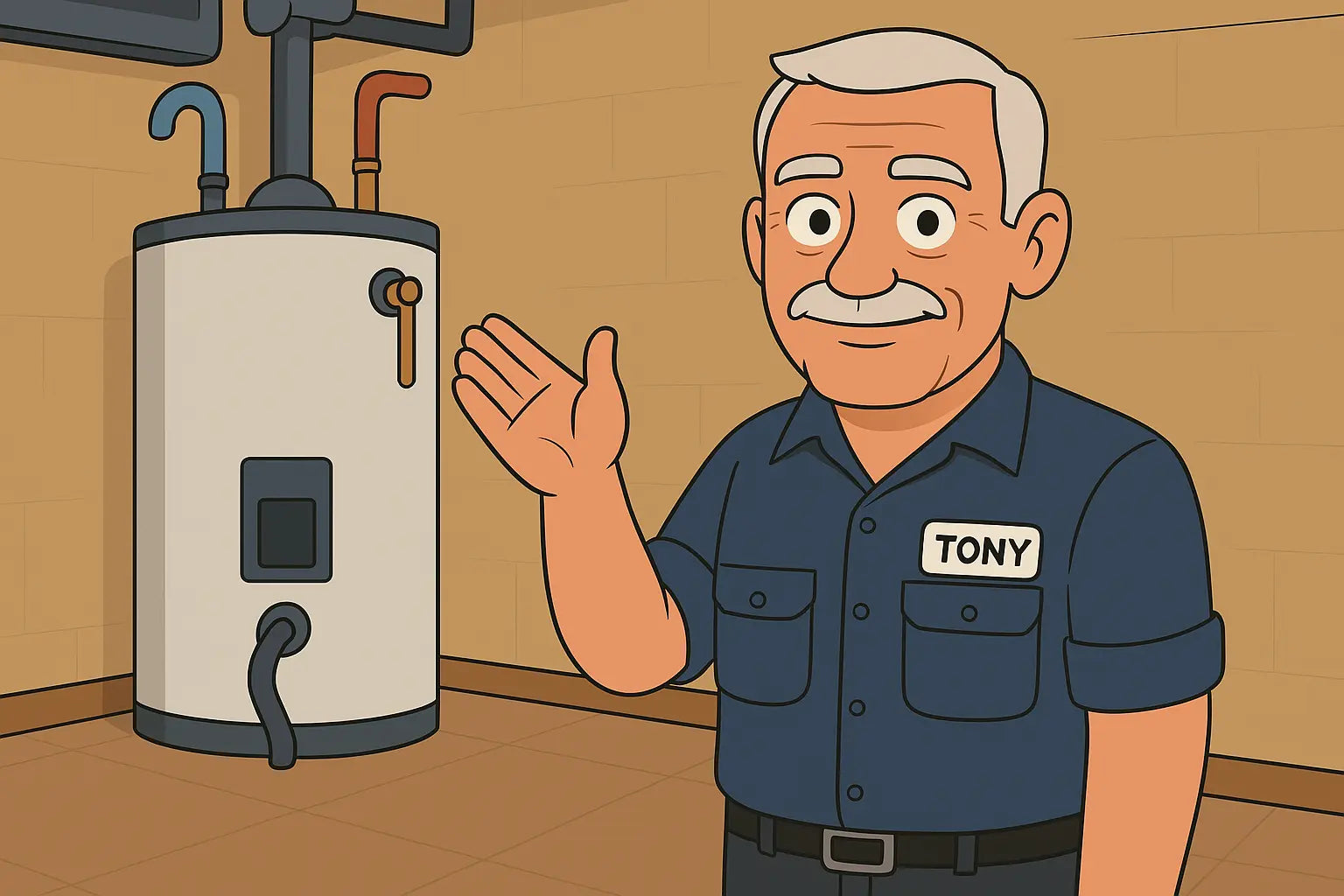Tony the Trusted Tech Here!
Alright folks—if you’ve found yourself standing in a freezing cold shower because your electric water heater keeps tripping the reset button, you’re not alone. I get this call a lot, and the fix isn’t always as complicated (or expensive) as people think. But before you go pushing that red button over and over again, let’s talk about what’s really going on and how to troubleshoot it the right way.
🔧 What That Red Reset Button Actually Does
Let’s start with the basics. The red reset button on your electric water heater is part of a built-in High Limit Safety Switch. That thing’s like the water heater’s emergency shutoff system. If the internal temperature gets too hot—usually above 180°F—it cuts the power to stop things from going full meltdown mode.
It's a safety feature, and it's doing its job. But if you have to keep resetting it? That means something's not right.
Heads up: Repeatedly pressing that reset button without solving the core issue can lead to more damage—or worse, dangerous overheating.
🔍 Top Reasons Your Reset Button Keeps Tripping
1. A Failing Thermostat
This is hands-down the most common culprit. If one of your thermostats (upper or lower) is stuck in the “on” position, it’ll overheat the water until the safety switch kicks in.
How to check:
-
Turn off the power.
-
Use a multimeter to test for continuity on both thermostats.
-
Replace the faulty one if it doesn’t read correctly.
Need a visual walk-through? Check out this step-by-step guide from Service Champions on replacing thermostats. It’s solid stuff.
2. Burned-Out or Grounded Heating Elements
If your heating element shorts out or grounds to the tank, it can keep heating even after the thermostat shuts off. That’ll cook your water hotter than it should be, flipping the high limit switch.
-
Look for signs of damage or bubbling around the element port.
-
Remove and test each element with a multimeter.
Still unsure? This visual from The Spruce helps walk you through testing and replacing the elements.
3. Loose or Frayed Wiring
Loose connections mean poor electrical contact, which can cause arcing, overheating, and tripping the reset. It’s one of those things that’s easy to miss, but dangerous if ignored.
Pro tip from Tony: Check every screw terminal and wire nut. If there’s any corrosion or melted insulation, it’s time to rewire that section properly.
4. The Reset Button Itself is Faulty
Yup—sometimes the actual reset switch gets weak or overly sensitive from age or wear. If everything else checks out, but the button keeps popping, it might be time to replace the upper thermostat assembly altogether.
You can grab one from a local hardware store or check out high-rated universal kits like this one from Rheem’s parts shop—just make sure it matches your model.
5. Sediment Buildup and Insulation Issues
Sediment at the bottom of the tank traps heat around the element, making it overheat and shut off. This is especially common in areas with hard water (hey there, Midwest!).
Over time, excess insulation around thermostats or heating elements can also cause poor heat dissipation.
Learn more about how sediment buildup impacts efficiency in this Energy.gov guide on water heating.
🧰 How to Safely Troubleshoot the Problem
Here’s Tony’s 5-step plan:
Step 1: Shut Off Power at the Breaker
Don’t skip this. You’re working with 240 volts here—respect the current.
Step 2: Open the Access Panels
Remove the top and bottom covers to access the thermostats and elements. You’ll usually need a Phillips screwdriver.
Step 3: Test Components with a Multimeter
Check continuity on both thermostats and elements. You’re looking for open circuits, shorts to ground, or stuck contacts.
Step 4: Check All Wiring
Inspect every connection. Tug gently on wires and make sure terminals are tight. Look for signs of overheating.
Step 5: Drain and Flush the Tank (if needed)
If you’ve got sediment buildup, hook up a hose to the drain valve and flush the tank thoroughly.
Here’s a solid video from This Old House on YouTube that shows the full process.
🧯 When It’s Time to Call a Pro
If you’ve replaced the thermostats, tested the elements, checked the wiring, and it’s still tripping? It’s time to bring in licensed help. It might be an internal wiring issue, or even a faulty control board (yes, even electric tanks are getting fancy these days).
Don’t mess with complex electrical problems if you’re not trained. Water + power = ⚡ trouble.
🔄 Prevention Tips: Keep It from Happening Again
-
Flush the tank annually to reduce sediment.
-
Test the thermostats every 6 months.
-
Keep ventilation clear around the tank.
-
Inspect wiring and terminals during other home maintenance.
-
Install a surge protector if your area gets lightning strikes or power surges.
Also, consider installing a smart water heater controller, like the ones from Aquanta. It tracks usage and warns you of problems before they leave you cold.
👷 Tony’s Final Take
Listen, your 50–60 gallon electric water heater is built to give you years of hot showers—but only if it’s maintained right. If that reset button is popping off all the time, don’t just keep pressing it like it’s a snooze alarm. It’s your system’s way of waving a red flag.
Start with the simple checks: thermostats, elements, wiring. Replace what needs fixing. And if it’s still giving you trouble, bring in someone like me—or find a licensed pro who’ll treat your home like it’s their own.
Check out 50–60 gallon electric options built for easy maintenance, safety, and smart efficiency on The Furnace Outlet.
Worried about making wiring mistakes? Visit: The Electrical Mistakes That Can Ruin Your 50–60 Gallon Water Heater.
Stay safe out there—and keep the hot water flowing. 🔧💧
- Tony the Trusted Tech







